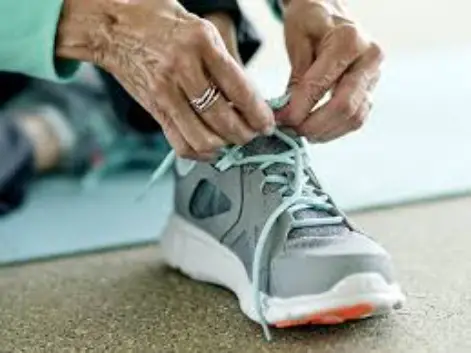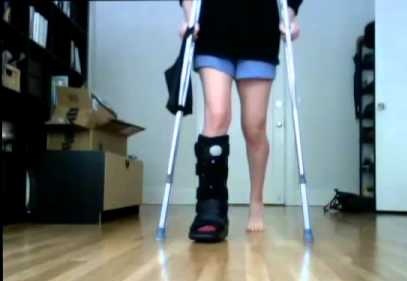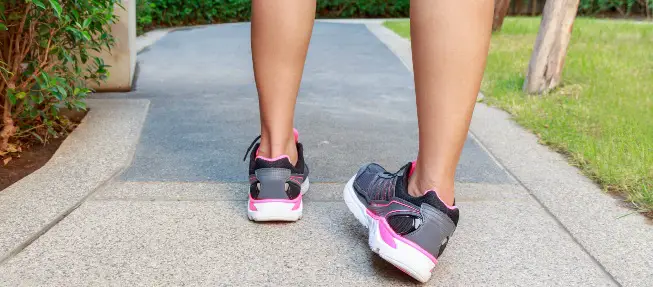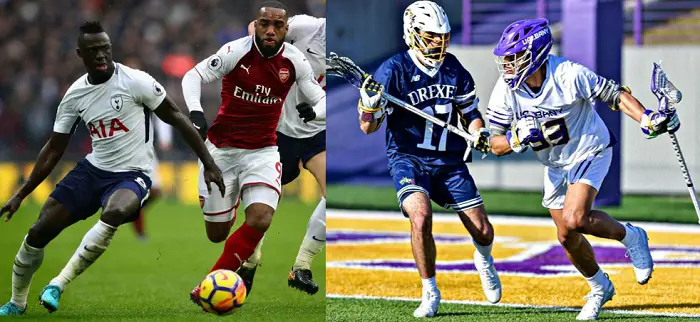
Football and lacrosse cleats are helpful for the same basic purpose: to provide the players with additional traction on all types of grounds and surfaces- from grassy fields to artificial turfs.
It doesn’t just help in the smooth mobility of the players but also protects them from injury.
The thing you need to care about is football cleats and lacrosse cleats; although they seem to be the same, they are not. They are uniquely designed for their respective game and should not be used in place of one another.
Before we take a look at the differences in detail, let us know more about the football and lacrosse cleats and the similarities between them.
Football and Lacrosse Cleats
Cleats are specialized athletic shoes featuring protrusions (also called studs or the cleats themselves) on the sole.
Their main purpose is to dig into soft surfaces like grass, dirt, or mud, providing superior traction and preventing a player from slipping.
This stability is crucial for making quick turns, accelerating, and stopping suddenly in sports such as football, soccer, and baseball.
The name “cleat” originates from an Old English word that referred to a wedge, lump, or fixed projection.
Historically, a cleat was a piece of wood or metal fastened to an object to serve as a grip or support, like the fittings used on boats to secure ropes (nautical cleats).
The small, fixed projections on the bottom of athletic shoes that provide a grip are functionally identical to these historical wedges. Thus, the term for the fixed projection (the cleat) was applied to the shoe itself.
Lacrosse and football cleats should work with precision on the wet, slimy, and treacherous ground and also on dry grasses, so everyone needs a plethora of stud options.
Whether it’s a game of lacrosse or football, cleats for both sports come with molded studs that are constructed in the soles.
You also have the availability of detachable studs, which give the players an option to change them out as and when they want.
Both sports use cleats made of either synthetic or leather uppers. They also lay emphasis on the location of all cleats along with the shoe’s outer edge to gain the highest traction at the time of lateral movement.

Football Cleats vs. Lacrosse Cleats
Though similar in a lot of ways, there are some differences between the cleats for football and lacrosse.
Let’s check them out here so that you can choose the one that suits your game best. The places where football and lacrosse cleats differ are:
1- Need to breathe
Both shoes differ in how much airflow they enable around the feet.
Lacrosse shoes are made for higher breathability, while footballs offer higher protection from the cleats of the other football players at the time of close-quarter contact.
Several lacrosse cleats come decked with mesh vents in the upper for better airflow.
The uppers made of leather offer higher breathability in comparison to synthetic uppers, even where there isn’t any vent, which isn’t present on most of the football cleats
2- Count the stud
Though the number of differences varies depending on the cleat style and the preference of the player, in general, lacrosse cleats have a greater number of studs in comparison to football cleats.
The general cleat layout for a lacrosse shoe is four at the heels and around 6 to 8 in the toe and ball of the foot.
On the contrary, football cleats usually have two studs in the back at the heel and around 5 below the toe and ball of the foot.
3- Ankle heights
Both football and lacrosse offer cleats of varying heights, but the differences are higher in the football ones.
Lacrosse makes use of mid-cuts for resistance and low-cuts for flexibility. The cleat styles of football differ by position. Because linemen may require higher ankle support, hence they go for high-tops.
Mid-cuts, on the contrary, render support to the ankles along with flexibility, which makes them a perfect option for quarterbacks.
And, the players who need high speed and agility should go for low-cut cleats as they are lighter.
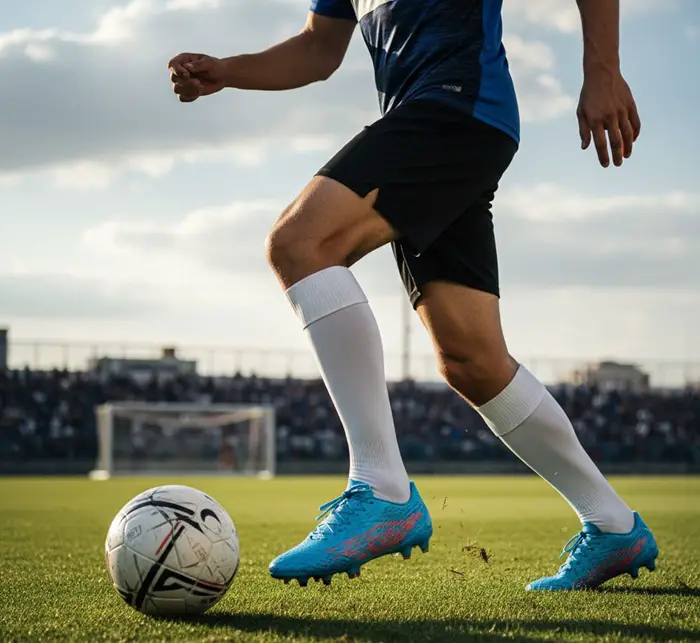
Football vs. Lacrosse Cleats – Basic Differences
| Feature | Lacrosse Cleats | Football Cleats |
|---|---|---|
| Overall Design | Built with a sleek, low-to-mid cut shape that promotes agility and speed. | Heavier, more reinforced design available in low, mid, and high cuts for added balance and protection. |
| Stud Arrangement | Uses molded studs crafted for swift, multi-directional footwork. | Offers both molded and removable studs tailored for traction during acceleration and sudden stops. |
| Upper Construction | Made from synthetic blends or soft leather for a flexible yet snug feel. | Constructed from tougher synthetics, leather, or textiles to withstand physical impact. |
| Ankle Support | Mid-cut design gives moderate ankle support without limiting movement. | Support level depends on cut—high-cut offers more stability, while low-cut favors mobility. |
| Toe Box Shape | Slimmer toe box designed for quick toe-off movements. | Wider toe box that provides more comfort and extra toe protection. |
| Weight | Very light to promote swift sprints and dodging. | Slightly heavier to deliver more strength and foot stability. |
| Traction Pattern | Configured for fast directional changes on turf or grass. | Built for maximum grip during explosive movements, tackles, and quick starts. |
| Protection Level | Blends safety and freedom of motion for endurance play. | Focuses heavily on protection to handle physical contact and collisions. |
| Ventilation | Highly breathable to keep feet cool during intense matches. | Moderate airflow—prioritizes toughness and longevity. |
| Flexibility | Highly flexible sole and upper for fast pivots and cuts. | Moderate flexibility—varies depending on playing position. |
| Best Playing Surface | Works best on turf and natural grass. | Suitable for both natural and artificial grass fields. |
| Top Brands | Nike, New Balance, Under Armour. | Nike, Adidas, Puma, Under Armour. |
| Position-Specific Styles | Generally uniform across player positions. | Tailored options for linemen, receivers, kickers, and running backs. |
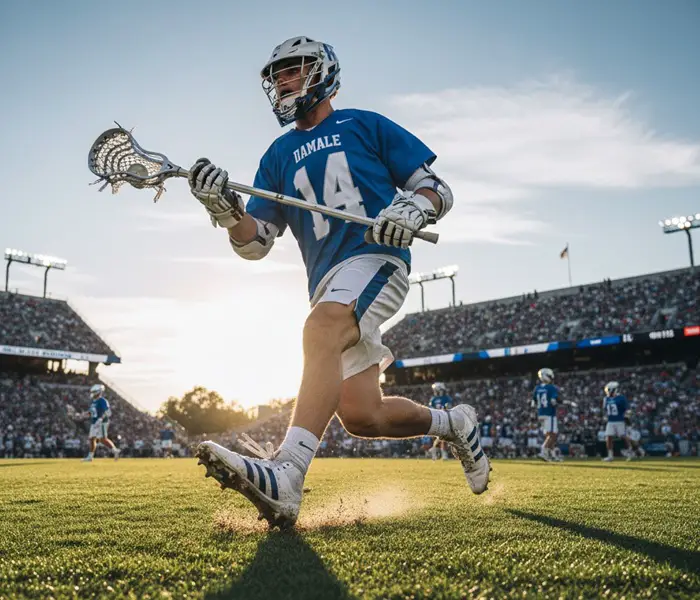
Can You Wear Football Cleats for Your Lacrosse Game?
Though football and lacrosse cleats may appear to be the same, there are a lot of differences between the two.
It is therefore not recommended to use football cleats for lacrosse or vice versa.
When buying you should focus on the above-given points, especially when you are planning to give the maximum performance in the game yourself.
When might it work?
Because both sports—Lacrosse and American Football—are played on grass or turf, cleats for each share many features: traction studs, durable uppers, and support for quick starts and stops.
In fact, a sports-brand guide notes that football cleats are technically allowed for lacrosse. On the recreational or youth level, using football cleats for lacrosse is common.
When it might not be ideal?
Although the two types look similar, there are design differences tailored to each sport:
- Lacrosse cleats emphasise multidirectional movement, lateral cuts, and rapid change of direction. Football cleats often emphasise forward drive and linear acceleration.
- The stud configuration differs: lacrosse cleats tend to have shorter, evenly distributed studs to grip in all directions; football cleats may have longer, more aggressive studs or toe spikes for pushing off.
- Ankle support: Lacrosse players often want mid-cut for agility + stability; football cleats include many high-cut options for big-body contact situations.
In terms of pricing, lacrosse cleats from brands like New Balance (FreezeLX V5, $120–$150) or Under Armour (Command Pro, $100–$130) tend to cost slightly more than mid-range football cleats such as Nike Vapor Edge Pro 360 ($90–$120) or Adidas Adizero Primeknit ($80–$100) due to their sport-specific traction systems.
Final Thoughts
While football and lacrosse cleats may look nearly identical at first glance, their performance design tells a different story.
Football cleats are built for power, traction, and stability in straight-line movements, making them perfect for hard pushes and tackles.
Lacrosse cleats, on the other hand, focus more on speed, agility, and multidirectional control, helping players make rapid cuts, pivots, and dodges on the field.
Ultimately, if you’re a casual player, football cleats can serve you well for lacrosse practice or low-stakes games.
But if you’re playing competitively, investing in true lacrosse cleats is worth it—they’re designed for the game’s unique pace, provide better support for lateral motion, and help reduce injury risk.
Think of it this way: you wouldn’t wear basketball shoes for soccer, so give lacrosse its own shoes too.


